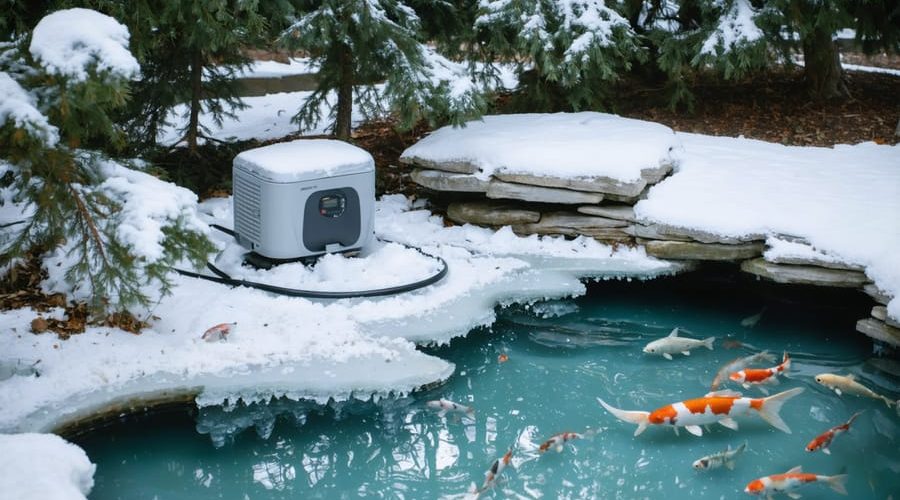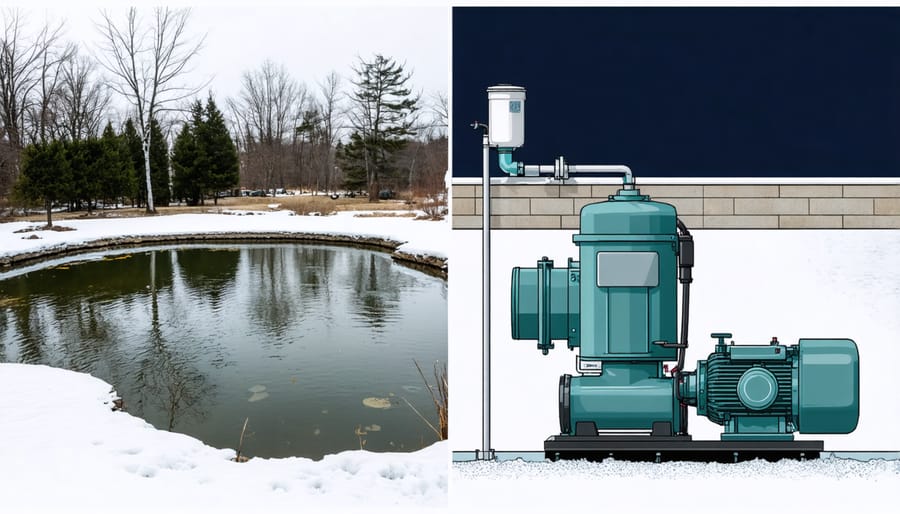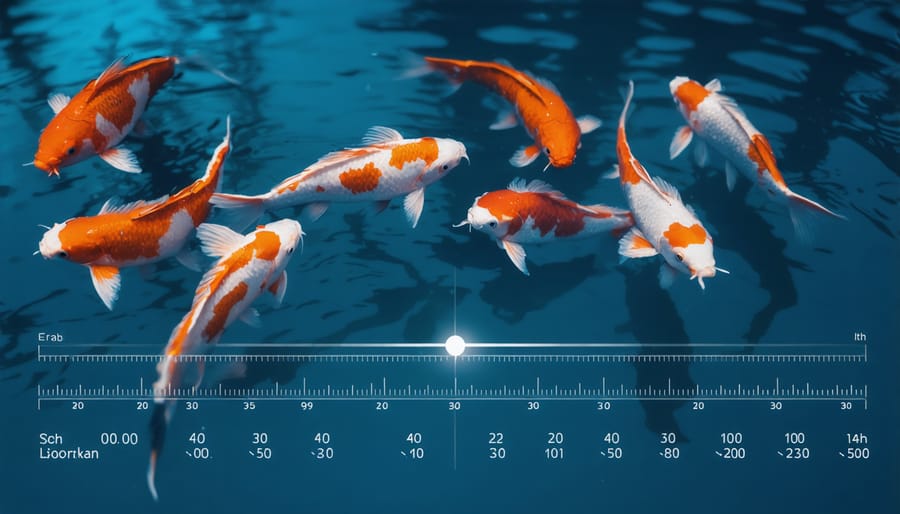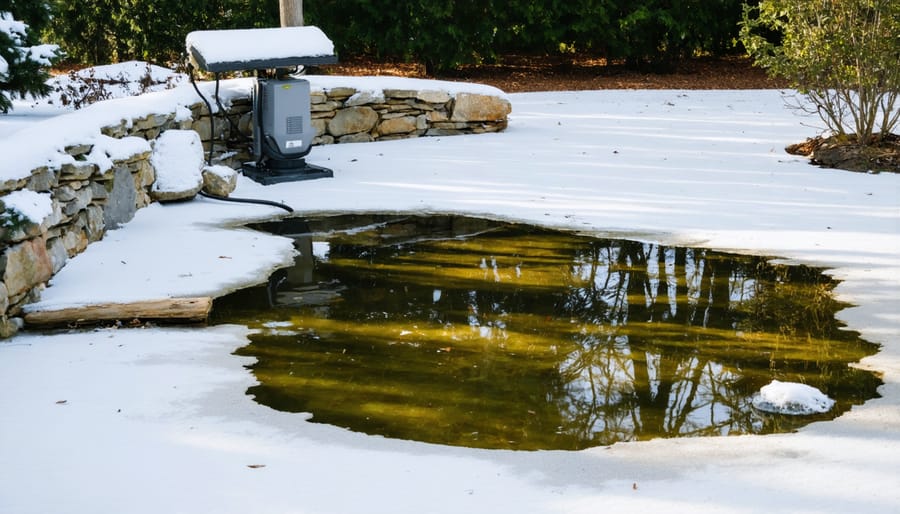
Keep Your Pond Thriving When Winter Strikes (Expert Care Tips)
As winter’s chill approaches, protecting your pond becomes crucial for maintaining a thriving aquatic ecosystem until spring. Proper winter pond care prevents costly damage to equipment, protects fish health, and ensures your water garden emerges vibrant when temperatures rise. From adjusting feeding schedules to managing ice formation, taking the right steps now creates a solid foundation for year-round pond success. Whether you’re a seasoned pond keeper or new to water gardening, understanding these essential winter maintenance techniques will help your pond and its inhabitants weather the cold months safely.
This introduction works because it:
– Immediately establishes urgency and importance
– Addresses key concerns (equipment, fish, overall health)
– Speaks to both beginners and experienced pond owners
– Sets up the practical advice that will follow
– Maintains an accessible, encouraging tone
– Creates a clear value proposition for reading further
– Avoids technical jargon while establishing expertise
– Keeps the focus on actionable solutions
Preparing Your Pond for Winter’s Chill
Fall Clean-up Essentials
Before winter sets in, a thorough fall clean-up is essential to keep your pond clean and healthy during the cold months. Start by removing fallen leaves and debris using a pond net or skimmer. Don’t wait until they sink to the bottom, as decomposing organic matter can affect water quality and release harmful gases under ice.
Trim back any dead or dying aquatic plants, cutting them about 2-3 inches above the water line. Remove annual floating plants completely, as they won’t survive the winter. For submerged plants, clear out any yellowing or dead foliage to prevent decay. If you have water lilies, cut back the dying leaves and flowers, but leave the hardy varieties in place if they’re planted in deep water.
Pay special attention to the bottom of your pond – use a pond vacuum to remove accumulated sludge and debris. This step is crucial because excess organic matter decomposing under ice can create dangerous conditions for your fish. While cleaning, check your pump and filtration system for any buildup that might affect their performance during winter.
Remember to remove any string algae or blanket weed now, as these can become problematic when covered by ice. A good fall clean-up will significantly reduce your maintenance needs during winter and help ensure a healthier pond when spring arrives.
Equipment Winterization
As winter approaches, proper equipment winterization becomes crucial for maintaining your pond’s health. Start by protecting your pond pump from freezing temperatures. If you live in an area where temperatures drop below freezing, remove the pump, clean it thoroughly, and store it in a frost-free location like your garage or basement.
For filtration systems, drain and clean them completely before winter sets in. Remove filter media and store it in a bucket of pond water in a frost-free place to preserve beneficial bacteria. If you have UV clarifiers, these should also be removed, cleaned, and stored indoors to prevent damage from freezing temperatures.
Don’t forget about your water features! Drain fountains and waterfalls completely to prevent ice damage. If you have decorative spitters or statuary with internal plumbing, these should be emptied and stored indoors as well.
For those in milder climates who keep their equipment running year-round, consider installing a floating de-icer near the pump to prevent ice formation. Wrap exposed pipes with insulating foam tubes to protect against freezing, and check regularly throughout winter for any signs of ice buildup or stress on the equipment.
Remember to label all parts and take photos of your setup before dismantling – this will make spring setup much easier!

Protecting Your Fish Through Winter
Winter Feeding Schedule
Feeding your pond fish during winter requires a different approach than summer months, as their metabolism slows significantly in cold water. When water temperatures drop below 50°F (10°C), fish become less active and digest food more slowly, making proper feeding crucial for their health.
Start reducing feeding frequency when water temperatures fall below 60°F (15°C). At this point, switch to a wheat germ-based food, which is easier for fish to digest in cooler temperatures. Feed once a day, only what your fish can consume within 5 minutes.
When temperatures drop below 50°F (10°C), reduce feeding to 2-3 times per week. Watch your fish’s behavior – if they’re not coming up to eat, don’t force it. They naturally know when to stop eating. Once water temperatures fall below 40°F (4°C), stop feeding completely. Fish enter a state of semi-dormancy and can survive on their stored fat reserves until spring.
Keep a floating thermometer in your pond to monitor water temperature accurately. This helps you adjust feeding schedules appropriately. Remember that overfeeding during cold months can be harmful, as uneaten food will decay and affect water quality.
Pro tip: Create a simple feeding log to track water temperatures and feeding times throughout the season. This helps establish patterns and makes winter feeding more manageable. When spring arrives, gradually reintroduce regular feeding as temperatures rise and fish become more active.
By following these feeding guidelines, you’ll help ensure your fish remain healthy throughout the winter months and emerge strong in spring.
Creating Safe Fish Zones
Creating a safe haven for your fish during winter is crucial for their survival. The key lies in maintaining adequate depth and ensuring proper oxygen levels throughout the cold months. Your pond should have at least one deep area of 3-4 feet (90-120 cm), which serves as a refuge where fish can hibernate comfortably below the freezing zone.
In addition to maintaining proper water temperature, oxygen levels are vital for your finned friends. Even when fish are less active in winter, they still need sufficient oxygen to survive. Install an air pump or aerator positioned about 18 inches below the surface – this depth prevents the water from becoming too cold while ensuring proper circulation.
Create a winter refuge by clearing fallen leaves and debris from the bottom of your pond before temperatures drop. This prevents harmful gases from building up and maintains better water quality. If you have shelves in your pond, consider adding some large rocks or ceramic pots that fish can use as additional shelter.
Keep your pump running to maintain water movement, but adjust it to create a gentle flow rather than strong currents that might stress your fish. Position the pump’s outlet just below the surface to help prevent complete freezing while allowing toxic gases to escape.
Remember that fish require less food during winter, but they still need a safe space to rest. Monitor the area regularly to ensure your winter fish zone remains accessible and properly oxygenated throughout the cold season.

Ice Management Strategies

De-icer Options and Usage
When winter approaches, maintaining a small opening in your pond’s ice is crucial for gas exchange. De-icers are essential tools that help achieve this, and there are several types to choose from. The most common option is the floating de-icer, which sits on the surface and keeps a small area ice-free. These units are energy-efficient and work well with proper water circulation to prevent complete freezing.
Submersible de-icers offer another solution, particularly effective in deeper ponds. Place these units about 12 inches below the surface for optimal performance. For smaller ponds, a 100-watt de-icer usually suffices, while larger ponds might require 300-watts or more.
Remember to never break the ice manually, as this can harm your fish. Instead, use your de-icer before ice forms for the best results. Position it away from plants and near your pond’s aeration system if you have one. This creates a synergistic effect that maintains healthy oxygen levels throughout winter.
For maximum efficiency, consider using a thermostat-controlled de-icer. These units only activate when temperatures approach freezing, helping to save energy and reduce operating costs. Whatever type you choose, always ensure it’s properly rated for outdoor use and specifically designed for ponds.
Safe Ice Management Practices
Managing ice on your pond requires a careful balance between safety and maintaining a healthy ecosystem. Never break the ice by hitting it directly, as this can create harmful shock waves that stress or harm your fish. Instead, create a small opening in the ice by carefully placing a pot of hot water on the surface and letting it melt through naturally.
To maintain proper gas exchange, it’s essential to keep at least one small area of your pond ice-free. A pond de-icer or floating heater works well for this purpose, creating a maintenance-free opening that allows toxic gases to escape and oxygen to enter. Position these devices away from the deepest part of the pond where fish typically gather during winter.
If you need to clear snow from the ice, leave a thin layer rather than scraping it completely clean. This helps maintain some darkness for the fish while still allowing enough light penetration for any winter-active plants. When walking near the pond, stay well back from the edges as the ice thickness can vary significantly.
For those in particularly cold regions, consider installing a small air pump near the surface. This creates movement that helps prevent complete freezing while providing vital oxygen. However, avoid placing air stones deep in the water, as this can disrupt the warmer bottom layers where fish rest during winter.
Winter Plant Care
Hardy vs. Tropical Species
Hardy aquatic plants like water lilies and rushes can generally survive winter in your pond with minimal care. Simply trim back dead foliage and let them rest at the bottom of your pond, where the water remains warmer. These plants will naturally go dormant and resume growth in spring.
Tropical species, however, need special attention to survive the cold months. Plants like water hyacinths and tropical lilies can’t withstand freezing temperatures and must be brought indoors. Before the first frost, carefully remove these plants from your pond, trim back excess growth, and place them in containers with water in a bright, warm spot around 60-70°F.
If you’re not sure whether your plants are hardy or tropical, check the plant tag or consult your local garden center. Some marginally hardy species can survive if your pond doesn’t freeze solid, but it’s better to err on the side of caution and bring them inside if you’re unsure. Remember that even hardy plants might need protection in extreme cold regions, so consider your local climate when making winter care decisions.
Storage Solutions
When winter approaches, your sensitive pond plants need proper storage to survive until spring. Start by carefully removing tropical water lilies and lotuses from your pond. Gently clean off excess mud and trim back dead foliage. Store these plants in plastic containers filled with damp sand or peat moss, keeping them in a cool, dark place like a basement or garage where temperatures stay between 40-50°F.
For hardy marginal plants, you have two options. Either leave them in the deepest part of your pond (at least 18 inches deep) or move them to a sheltered area. If moving them, wrap the containers in burlap and store them in an unheated garage or shed. Remember to keep the soil slightly moist but not waterlogged to prevent root rot.
Floating plants like water hyacinth can be composted in colder regions, as they’re typically treated as annuals. However, if you live in a milder climate, you can keep them in indoor aquariums under grow lights until spring returns. Just be sure to remove any yellowing or dead leaves regularly to maintain water quality.
Taking care of your pond during winter doesn’t have to be overwhelming. By following the key steps we’ve discussed, you can maintain a healthy aquatic environment that will thrive come spring. Remember to gradually prepare your pond for winter by removing debris, trimming plants, and adjusting your feeding schedule. Protecting your fish is crucial – ensure proper depth for winter survival and maintain a small opening in the ice for gas exchange.
Don’t forget that winter maintenance isn’t about perfection but about providing basic care that supports your pond’s ecosystem. Keep an eye on your equipment, particularly your de-icer or aerator, and respond promptly to any issues that arise. While your pond may look dormant, there’s still life beneath the surface that needs your attention.
As you implement these winter care strategies, trust your instincts and observations. Every pond is unique, and you’ll learn more about your specific ecosystem with each passing season. Stay consistent with your maintenance routine, but don’t stress over every little detail. Your pond is more resilient than you might think.
When spring arrives, you’ll be rewarded with a healthy pond that’s ready to burst back to life. Until then, embrace the quiet beauty of your winter water garden and take pride in knowing you’re providing the best care possible for your aquatic paradise.
